We have all heard of the Great Wall of China, but few know that India also has its own “Great Wall of India”, that has been long overshadowed by its neighbour to the East. Commonly called after the fort it surrounds, Kumbhalgarh, it is almost unknown outside its region. This amazing wall is 2nd longest continuous wall on the planet protects a hidden secret in the deserts of India. Length of kumbhalgarh wall is 36kms and can easily be mistaken for the Great Wall of China if viewed at through photographs. Contrary to the latter, however, work on Kukbhalgarh began in 1443, separating the two not only through locations and cultures but many centuries as well. This UNESCO World Heritage Site "Kumbhalgarh fort" is also known to be the birth place of Maha Rana Pratap.
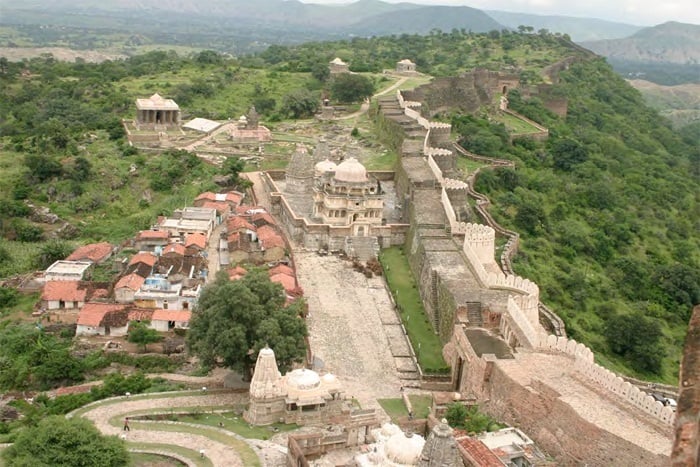
The wall that surrounds the ancient fort of Kumbhalgarh is one of the best-kept secrets in India, and perhaps the world. Protecting a massive fort that contains over 360 ancient temples within the fort, 300 ancient Jain and the rest Hindu temple. the wall was constructed half a millennium ago in tandem with Kumbhalgarh Fort itself. The wall is perhaps best known by its most sensational — and fitting — name: The Great Wall of India.
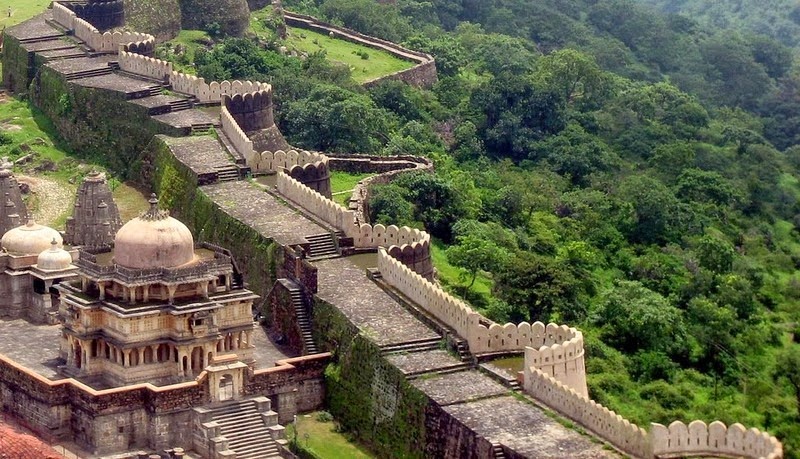
Its anonymity is mystifying, since this is no crumbling line of bricks fascinating only by description. The wall is massive, and breathtakingly majestic as it snakes through valleys and along mountaintops, again bearing a striking resemblance to its cousin in China. At its widest sections, the wall is 15 meters thick, and beautifully masoned with thousands of stone bricks and decorative flourishes along the top, making this just as attractive as a tourist destination as it once was effective as a deterrent.
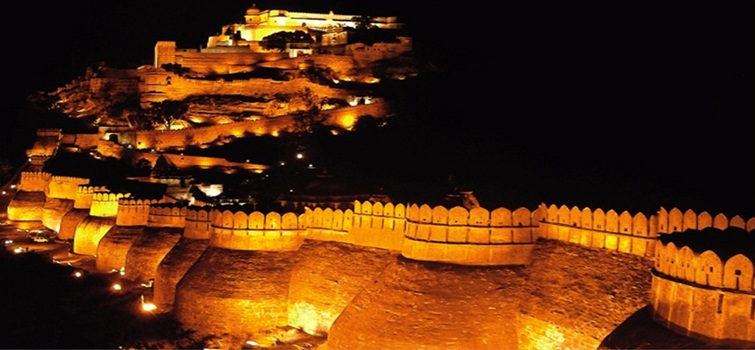
This gaudy defense is fitting for the perimeter wall of Kumbhalgarh Fort – itself a hulking, imposing construction, with its many pregnant ramparts bowing out into the desert in boulder-like configurations, stacked atop on another and giving the fort the appearance of a mountain.
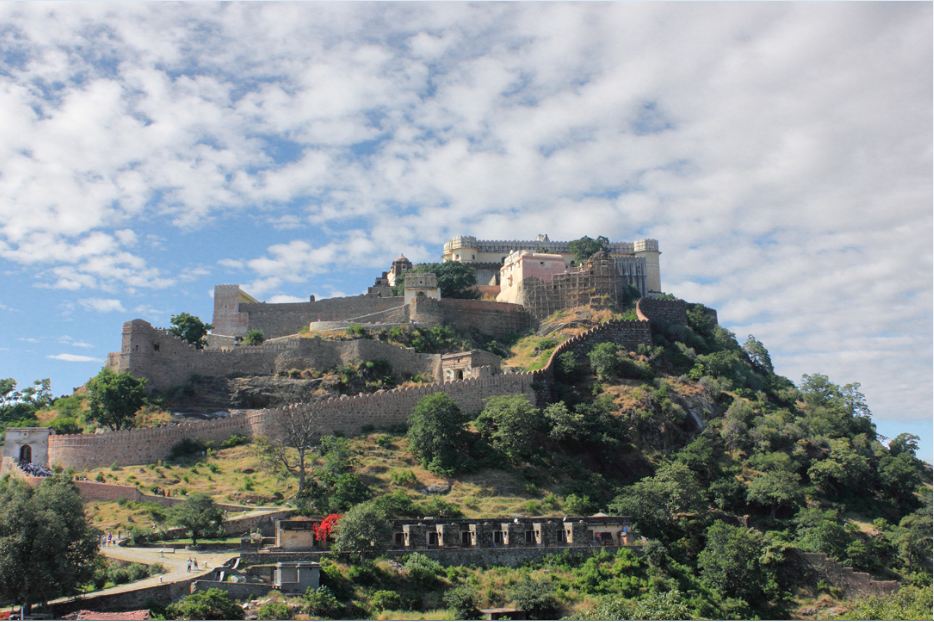
Visitors should beware that this piece of history, while alluring and well-preserved, is not well-trafficked. That remoteness and the potential to have miles of ruins all to oneself is appealing to plenty of off-the-beaten-path travelers, but the walls are tall, the stone hard, and while many of the traps and defensive mechanisms along the wall and fort have been deactivated, that does not mean accidents cannot happen.
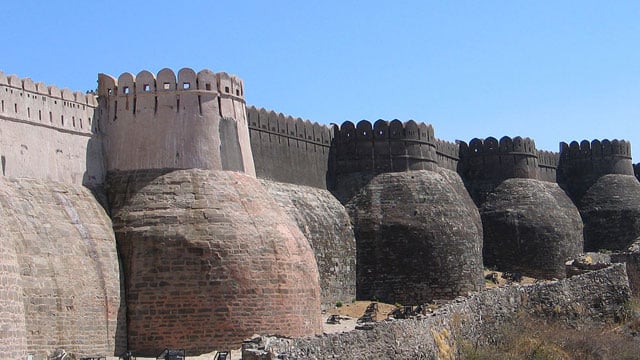
Kumbhalgarh Fort is a Mewar fortress on the westerly range of Aravalli Hills, in the Rajsamand District of Rajasthan state in western India. It is a World Heritage Site included in Hill Forts of Rajasthan. Built during the course of the 15th century by Rana Kumbha and enlarged through the 19th century, Kumbhalgarh is also the birthplace of Maharana Pratap, the great king and warrior of Mewar. Occupied until the late 19th century, the fort is now open to the public and is spectacularly lit for a few minutes each evening. Kumbalgarh is situated 82 km northwest of Udaipur by road. It is the most important fort in Mewar after Chittaurgarh.
History of kumbhalgarh wall :
The Kumbhalgarh was built and ruled by Kumbha and his dynasty who were Sisodia rajputs descendents. Kumbhalgarh in its present form was developed by, and said to be designed by a famous architecture of the era Madan. Rana Kumbha's kingdom of Mewar stretched from Ranthambore to Gwalior and included large tracts of erstwhile Madhya Pradesh as well as Rajasthan. Out of the 84 forts in his dominion, Rana Kumbha is said to have designed 32 of them, of which Kumbhalgarh is the largest and most elaborate.
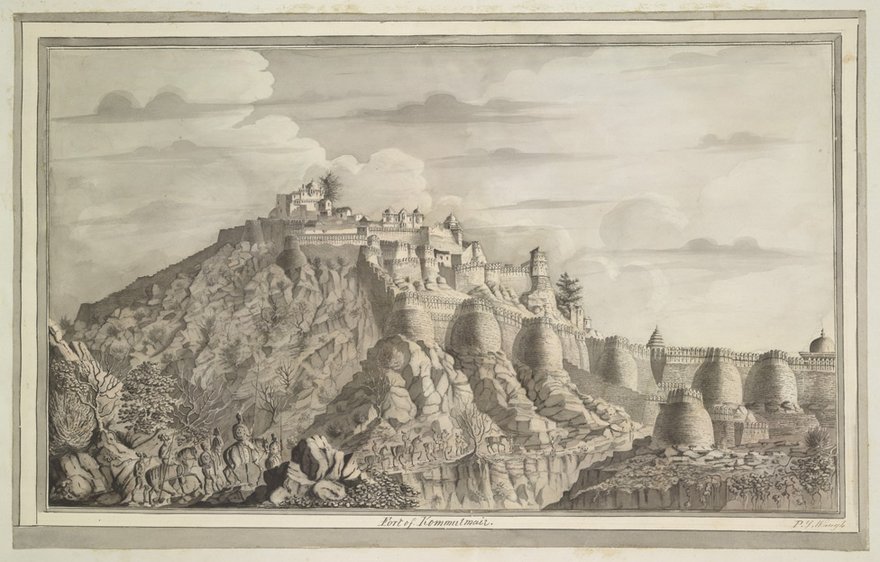
Kumbhalgarh also separated Mewar and Marwar from each other and was used as a place of refuge for the rulers of Mewar at times of danger. A notable instance was in the case of Prince Udai, the infant king of Mewar who was smuggled here in 1535, when Chittaur was under siege. Prince Udai who later succeeded to the throne was also the founder of the Udaipur City. The fort remained impregnable to direct assault, and fell only once, due to a shortage of drinking water, to the combined forces of Mughal Emperor Akbar, Raja Man Singh of Amber, Raja Udai Singh of Marwar, and the Mirzas in Gujarat.
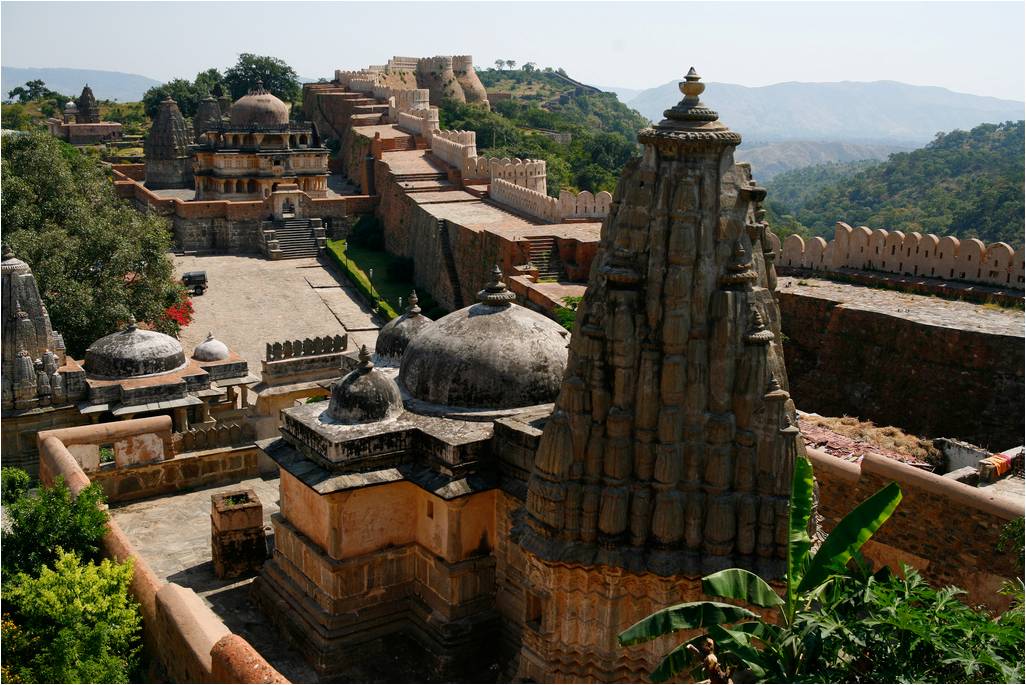
Ahmed Shah I of Gujarat attacked the fort in 1457, but found the effort futile. There was a local belief then that the Banmata deity in the fort protected it and hence he destroyed the temple. There were further attempts in 1458-59 and 1467 by Mahmud Khilji, but it also proved futile. Akbar's general, Shabhbaz Khan, is believed to have taken control of the fort in 1576. In 1818, an armed band of Sanyasins formed a garrison to protect the fort, but was convinced by Tod and the fort was taken over by the Marathas. There were additions made by Maharanas of Mewar, but the original structure built by Maharana Kumbha remains. The residential buildings and temples are well-preserved.
Fantasy Tale Of Kumbhalgarh :
According to legend, in 1443 CE, the Maharana of Kumbhalgarh, Rana Kumbha, was initially repeatedly unsuccessful in attempts to build the fort wall. A spiritual preceptor was consulted about the construction problems and advised the ruler that a voluntary human sacrifice would solve whatever was causing the impediment. The spiritual advisor advised building a temple where the head should fall and building the wall and the fort where the rest of his body lay. As can be expected, for some time no one volunteered, but one day, a pilgrim (some versions suggest a soldier, and some, that the spiritual preceptor and the pilgrim were one and the same) volunteered and was ritually decapitated. Today the main gate of the fortress, Hanuman Pol, contains a shrine and a temple to commemorate the great sacrifice.
According to popular folklore, Maharana Kumbha used to burn massive lamps that consumed fifty kilograms of ghee and a hundred kilograms of cotton to provide light for the farmers who worked during the nights in the valley.
If you like this post, Then please, share it in different social media. Help our site to spread out.
H/T: atlasobscura.com & Wikipedia.com
[divider scroll_text=”Back To Top”]
